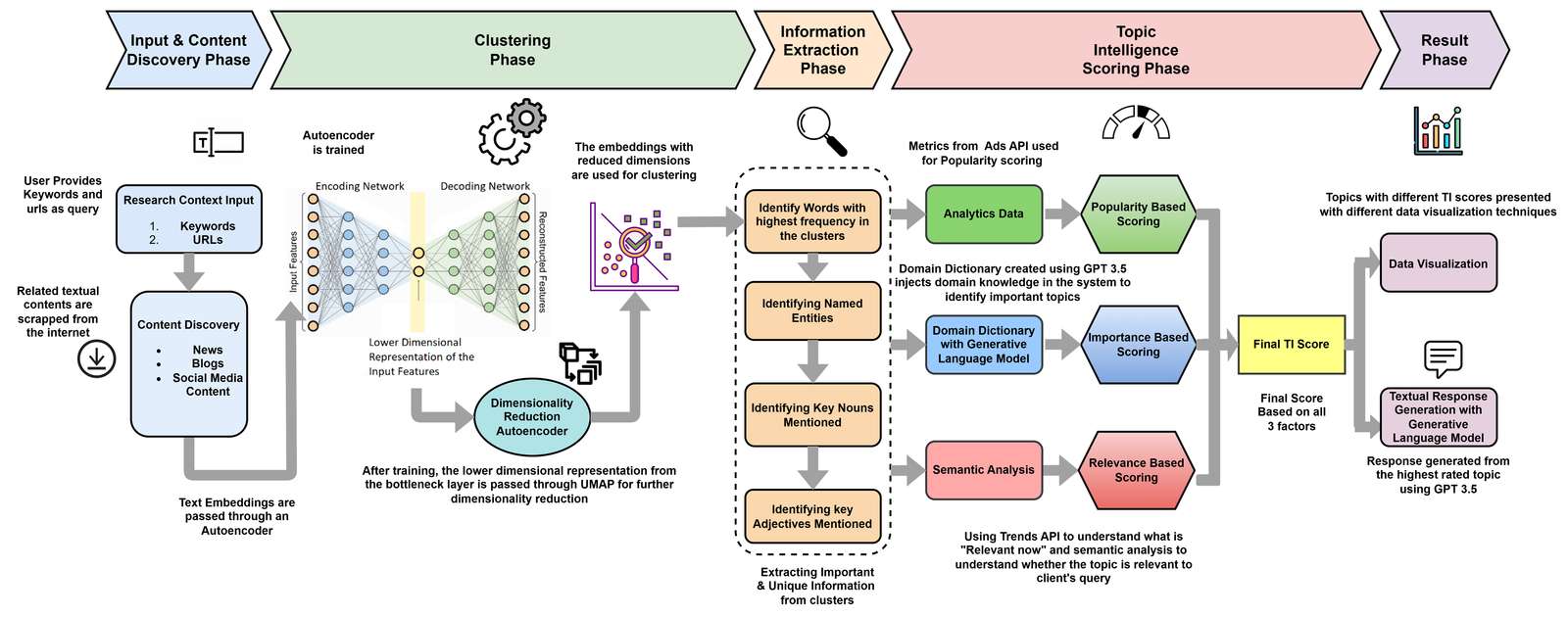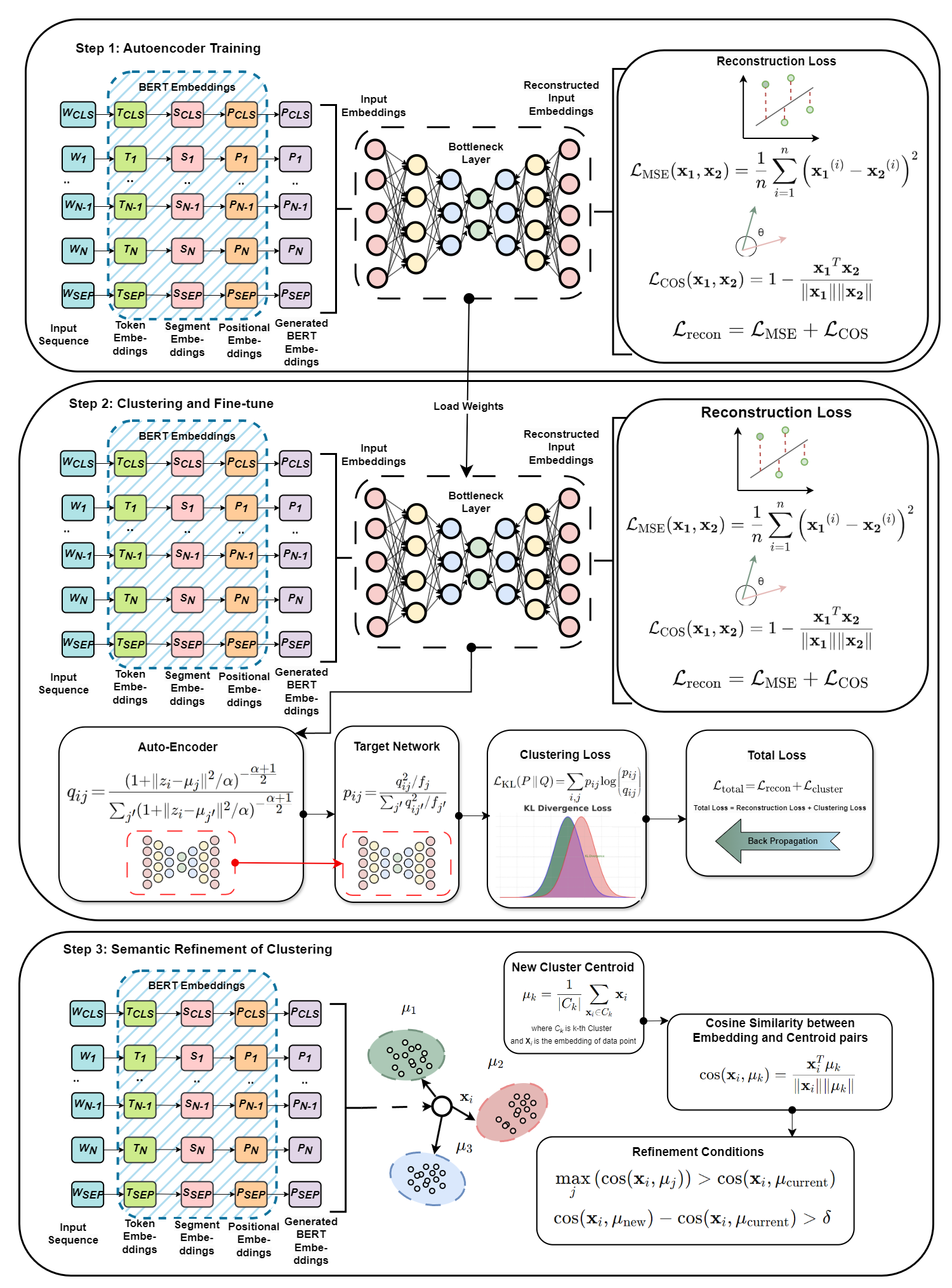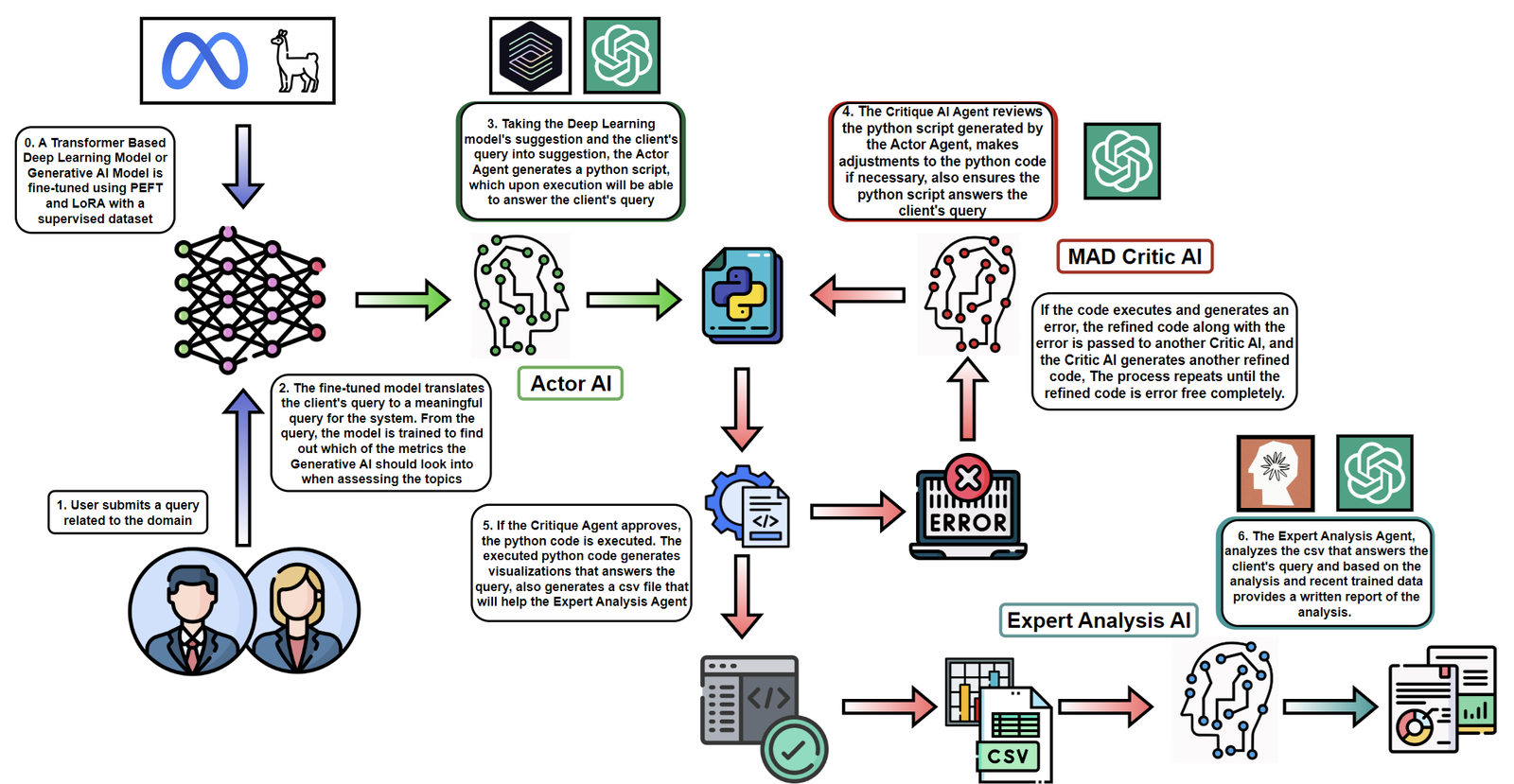Overview
SEO-TIMS is a cutting-edge Search Engine Optimization framework powered by Topic Intelligence Management System. It is designed to revolutionize how businesses and individuals optimize their online presence by providing personalized, data-driven insights. By leveraging advanced Natural Language Processing (NLP), Machine Learning (ML), and Generative AI, SEO-TIMS enhances search engine visibility by clustering content, scoring topic relevance, importance, and popularity, and generating actionable recommendations. The system integrates multiple phases, including Input Discovery, Clustering, Information Extraction, and Scoring, to provide comprehensive insights that bridge the gap between user intent and optimized content delivery.

Fig: SEO-TIMS System Architecture
System Architecture and Workflow
- Input & Content Discovery Phase
- Input: User queries and web-based content from search engines, APIs, and other custom data sources.
- Processing: Data is filtered, preprocessed, and structured into a clean format for analysis.
- Output: Aggregated datasets ready for clustering and scoring.

Fig: SDEC Clustering Framework
- Clustering Phase
- Core Algorithm: Semantic Deep Embedded Clustering (SDEC) fine-tunes clustering through semantic and distributional loss.
- Processing:
- Combines Transformer-based embeddings with autoencoder fine-tuning for high-accuracy clustering.
- Clusters are refined based on semantic similarity and adjusted with contextual understanding.
- Output: Well-defined topic clusters based on content similarity and context.
- Information Extraction Phase
- Key Components:
- Frequent Words & Phrases: Identifies commonly occurring n-grams to define cluster themes.
- Named Entity Recognition (NER): Extracts entities like people, organizations, and places to understand the cluster’s focus.
- Key Nouns & Adjectives: Provides insights into topics and sentiment within each cluster.
- Output: Detailed features and descriptors for each topic.
- Key Components:
- Topic Scoring Phase
- Popularity: Utilizes metrics from Google Ads API (e.g., bounce rate, click-through rate) and regression models to calculate topic popularity.
- Importance: Scores topics using a domain-specific dictionary and cosine similarity to assess contextual significance.
- Relevance: Uses BERT embeddings to measure the cosine similarity between user queries and topic phrases.
- Output: Final Topic Intelligence (TI) Score combining popularity, importance, and relevance.
- Insights & Recommendations Phase
- Outputs actionable recommendations by analyzing topic scores and trends through MASQRAD (Multi-Agent Strategic Query Resolution and Diagnostic) System.
- Provides tailored strategies for improving search rankings and content optimization.

Fig: MASQRAD framework
Key Features
- Personalized Search Optimization: Tailors search results to match user intent with precision and context-awareness.
- Clustering & Topic Intelligence: Improves content classification using transformer-based embeddings and fine-tuned clustering algorithms.
- Integrated Scoring System: Aggregates relevance, importance, and popularity metrics for holistic topic analysis.
- Actionable Insights: Delivers recommendations for keyword targeting, content strategies, and advertising campaigns.
- Dynamic Visualizations: Interactive representations of content clusters, topic trends, and scoring metrics.
Tools and Technologies
- Natural Language Processing: BERT for relevance scoring, Named Entity Recognition, and phrase embeddings.
- Clustering Algorithms: SDEC, K-Means, Gaussian Mixture Model, DBSCAN.
- Regression Models: Random Forest, XGBoost. LGBoost
- Data Analysis & Topic Modeling: Latent Dirichlet Allocation (LDA), TF-IDF, Cosine Similarity.
- Programming and Platforms: Python, Google Ads API.
- Data Collection: Scrapy, Google Ads API, Twitter API.
Outcomes and Impact
- Performance Improvements:
- Enhanced topic clustering accuracy by 4.37%.
- Achieved an 87% precision rate in query-to-topic alignment.
- Improved search visibility metrics for test cases by 23.5%.
- Business Benefits:
- Provides data-driven insights for improving search engine visibility and user engagement.
- Empowers businesses to make informed decisions about keyword targeting and content creation.
- Reduces dependency on manual SEO processes by automating content optimization and trend analysis.
SEO-TIMS represents a breakthrough in search engine optimization, leveraging AI-powered tools to create a more efficient, accurate, and scalable solution. Its comprehensive pipeline, from data discovery to actionable insights, transforms the way businesses approach digital visibility and user engagement.
